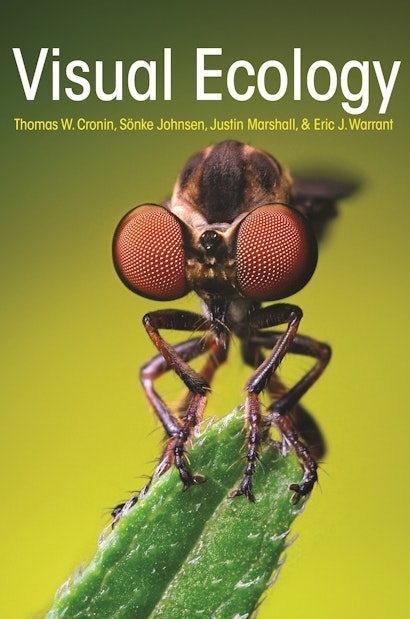Visual ecology is the study of how animals use visual systems to meet their ecological needs, how these systems have evolved, and how they are specialized for particular visual tasks. Visual Ecology provides the first up-to-date synthesis of the field to appear in more than three decades. Featuring some 225 illustrations, including more than 140 in color, spread throughout the text, this comprehensive and accessible book begins by discussing the basic properties of light and the optical environment. It then looks at how photoreceptors intercept light and convert it to usable biological signals, how the pigments and cells of vision vary among animals, and how the properties of these components affect a given receptor’s sensitivity to light. The book goes on to examine how eyes and photoreceptors become specialized for an array of visual tasks, such as navigation, evading prey, mate choice, and communication.
A timely and much-needed resource for students and researchers alike, Visual Ecology also includes a glossary and a wealth of examples drawn from the full diversity of visual systems.
- The most up-to-date overview of visual ecology available
- Features some 225 illustrations, including more than 140 in color, spread throughout the text
- Guides readers from the basic physics of light to the role of visual systems in animal behavior
- Includes a glossary and a wealth of real-world examples
Awards and Recognition
- Winner of the 2015 PROSE Award in Textbook/Biological & Life Sciences, Association of American Publishers
Thomas W. Cronin is professor of biological sciences at the University of Maryland, Baltimore County. Sönke Johnsen is professor of biology at Duke University. Justin Marshall is professor of biomedical sciences at the University of Queensland in Australia. Eric J. Warrant is professor of zoology at Lund University in Sweden.
"[A] beautiful textbook: aesthetically formatted, clearly written, and with many carefully-chosen (and beautiful to look at!) data images that support the concepts presented in each chapter. This is a wonderful resource for grad students and medical students who want a deeper understanding of vision, advanced undergrads as well as well as the curious (educated) layperson."—Grrrl Scientist
"A lovely, splendid book. . . . A superb resource that will serve the field well for years to come, I suspect that I could read this book another 20 times and learn something new with each reading. This book will undoubtedly become required reading for all incoming graduate students in this field. I highly recommend this book for anyone interested in how non-human animals see their surroundings."—Rebecca C. Fuller, Ecology
"One of the most brilliant textbooks written during the last years."—Brigitte Schoenemann, Anatomy & Physiology
"Visual Ecology explores the idea that how we see is shaped, perhaps even determined, by what we see. And not just us—from lowly dung beetles to terrifying mantid shrimps to majestic birds of prey, the authors provide a breathtaking tour of the clever solutions that Nature has found to the physics problems involved in sensing the visual environment. A beautiful book for a beautiful subject."—William Bialek, Princeton University
"Visual Ecology is the only current book of its kind. It provides the first comprehensive treatment of this important and rapidly evolving field in more than thirty years, and is a must-have for anyone interested in what vision is actually for."—Dan-Eric Nilsson, coauthor of Animal Eyes
"This is an excellent summary of the principles and wonderful phenomena of visual ecology and sets the standard for future work."—John A. Endler, author of Natural Selection in the Wild
"I have never enjoyed an academic text this much. This book is beautifully written. I read it cover to cover and I can honestly say I was never bored. Visual Ecology will undoubtedly become a classic."—Ron Douglas, City University London



